The hidden labyrinth of the Clapham South tunnels
By Ronan Thomas
Deep beneath the streets of Clapham lies a hidden labyrinth, rich in south London history.
During the second world war the Clapham South Deep Shelter protected thousands of local residents. It also hosted visitors to the Festival of Britain in 1951, received overseas workers and students and billeted troops.
For decades its tunnels were dark and silent. Today, 80 years after it opened, its South London heart beats again.
Clapham South was completed in 1942 as a response to inadequate provision during the Blitz between 1940-1941. Then, thousands nightly sought refuge as bombs rained down.
Around 30,000 Londoners were killed and 50,000 were seriously injured. Over one million buildings in the capital were destroyed or damaged. 1.5million Londoners were made homeless.
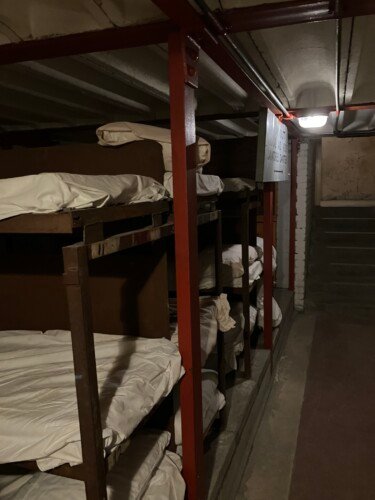
In October 1940, the government ordered eight deep shelters in London – each sheltering 4,000-8000 people – at Belsize Park, Camden Town, Goodge Street, Chancery Lane, Stockwell, Clapham North, Clapham Common and Clapham South.
Each was dug – by hand – 30 metres underground, protected by surface pill boxes. It was an admirable design, efficiently replicated. The shelters were completed in 1942.
In 1944, air raids resumed and an even worse threat menaced London. More than 3,000 V-1 flying bombs and V-2 rockets struck the capital. Almost 9,000 civilians were killed and 24,000 injured.
People flocked underground again for protection. Five out of the eight new deep public shelters were rapidly opened.
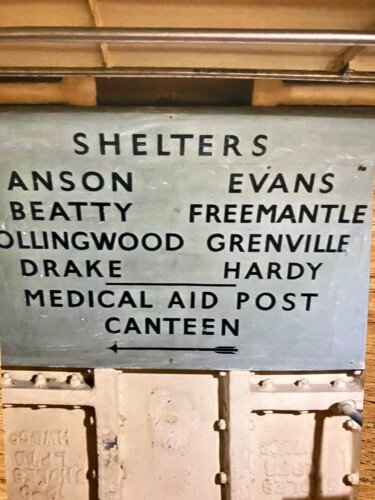
Clapham South cost £3million and opened to the public on 19 July 1944.
It offered safety in more than a mile of tunnels. Admission was by ticket, with priority for homeless families. Shelterers brought bedding in and out each morning.
Rows of three-tiered bunks provided 8,000 sleeping spaces. There were eight lavatory blocks and an infirmary. Air raid wardens kept order underground. Loudspeakers played music to soothe nerves.
It was cold sleeping in the tunnels. Eight public canteens sold cups of tea, sausage rolls, pies, jam tarts and cakes.
On August 15, 1944 Clapham South received VIP treatment, visited by Clementine Churchill, wife of the Prime Minister.
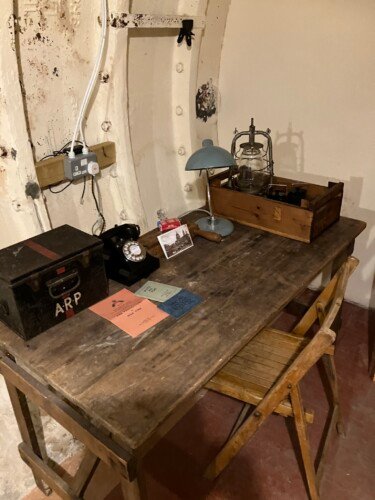
A year later in 1945, Clapham South was converted into a temporary hostel and migrant worker reception centre. In 1951 it hosted visitors to the Festival of Britain on the South Bank.
The Festival of Britain, which ran from May 3 to September 30 1951, was a hugely popular showcase of British scientific and cultural achievements, a celebration injecting national optimism after the rigours of war. 8.5million people attended.
Among them was my own father, travelling from Cardiff in a school group.
He marvelled at its pavilions, pleasure gardens, Royal Festival Hall, futuristic Dome of Discovery, 300- foot-high Skylon sculpture and funfair in nearby Battersea Park.
He remembered the excitement of exploring the shelter tunnels and the welcome availability of foodstuffs – for example cakes – not on his Cardiff ration book.
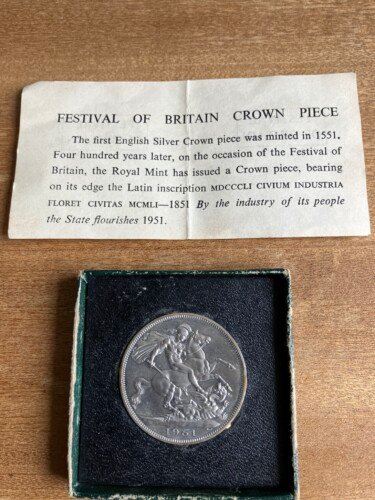
In the shelter, the Cardiff schoolboys also all carried a commemorative five-shilling silver Festival of Britain coin.
But, in 1956, the entire deep shelter network closed.
Clapham South was used for document storage for decades, inaccessible to the public.
In 1998, seven of the remaining deep shelters were sold to Transport for London. Today, four are still used for archival storage.
Others – like Clapham North – for hydroponic farming.
Clapham South closed for storage in 2008 and today is a Grade II listed building.
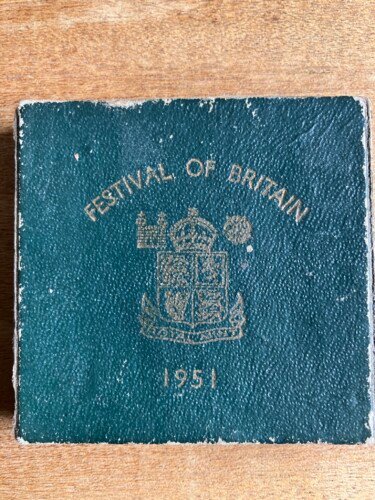
From 2015 the London Transport Museum, Covent Garden, has offered ‘Hidden London’ walking tours of the site.
Exploring the Clapham South Deep Shelter, in its 80th anniversary year, is a fascinating experience.
Entering from Balham Hill, our small group descended 180 steps down the shelter’s spiral staircase. 36 meters underground, the shelter is still remarkably preserved, well lit, cool and ventilated.
It was disorientating to hear the rumble of Northern Line tube trains travelling through tunnels ten metres above us.
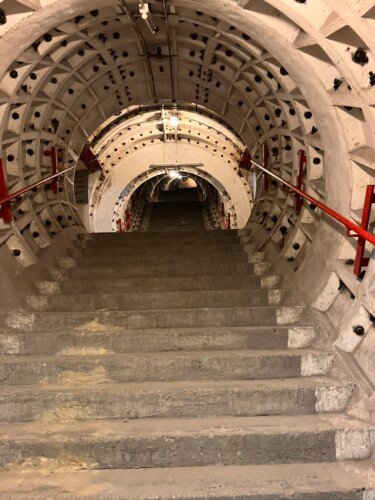
We walked along the long-curved tunnels and a preserved section of bunks. Graffiti from the period was still visible.
This area had particular resonance for me. I imagined my late father and his school friends excitedly staying here in 1951.
He never returned, but I was literally walking in his footsteps.
Today, 80 years on, Clapham South is a wonderful time capsule of life during times of celebration as well as threat.
And its secrets are now accessible to all.
Pictured top: Inside the Clapham South tunnels (Picture: Ronan Thomas)
